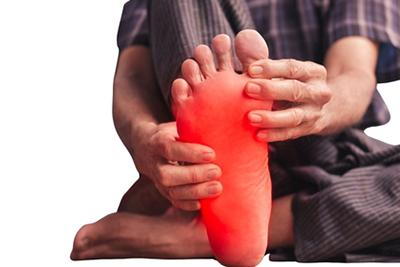
The plantar fascia, which is a thick tissue band responsible for connecting your heel bone and toes, runs beneath the bottom of your foot and along your sole. Plantar fasciitis is considered a relatively common foot issue that involves an aggravated/inflamed plantar fascia. At Stuto Foot Specialist Podiatry in Brooklyn Heights, NY, we know plantar fasciitis has the potential to create significant pain in the heel area, especially when one takes their first steps after sleeping or extended periods of inactivity. The good news is this painful and life-disrupting condition can be treated by a trained podiatrist near you.
Plantar Fasciitis: Symptoms
Pain - running along the foot's sole, is the primary symptom of plantar fasciitis. The condition is usually most painful after resting for some time. In addition, plantar fasciitis pain and discomfort typically increase after sustained periods of standing or walking.
Plantar Fasciitis: Common Causes
Plantar fasciitis can be caused by structural issues (like flat feet or high arches) or simply improper foot mechanics; in addition, personal life choices can also influence if plantar fasciitis develops (or even progresses) -
- Overuse/Strain
Walking, running, or standing for lengthy periods can create an inflamed plantar fascia and cause microtears. - Wrong Footwear Choices
Ill-fitting shoes have the potential to contribute to the ongoing progression of plantar fasciitis. - A Tight Achilles Tendon
This tendon – located near the heel - can put added stress on the plantar fascia. - Carrying Excessive Weight
Try to maintain a reasonable body weight because extra can inflame the plantar fascia.
Plantar Fascia: Treatments
Simply resting (and staying off your feet) with the application of ice helps inflamed tissue relax and reduce. Additionally, these treatments are also effective –
- Stretch the Achilles tendon/plantar fascia.
- Other therapeutic exercises to reduce related symptoms.
- Light/sound therapies can help with symptoms and healing.
- Choose the right footwear that offers appropriate cushion/support.
- Night splints are designed to keep the foot in the correct position.
- Consider either OTC or custom orthotic/shoe inserts.
- Nonsteroidal anti-inflammatory drugs can help with both inflammation and pain.
Plantar Fasciitis: Maintenance
For many, it is beneficial to be proactive and follow suggested lifestyle guidance -
- Maintain a reasonable weight for your height.
- Slowly add activities to a) see if you have new limits and b) avoid injury.
- Add regular stretching to help prevent re-occurrences.
However, note that in some cases, corticosteroid injections may offer a viable option.
Contact a Brooklyn Heights, NY, Podiatrist Near You Today
If you experience chronic foot pain or would like more information, contact us at Stuto Foot Specialist Podiatry at (718) 624-7537.


